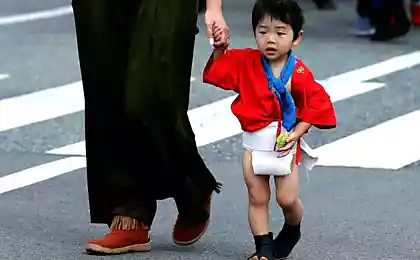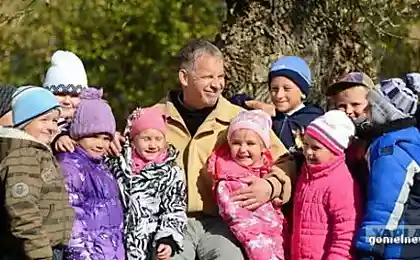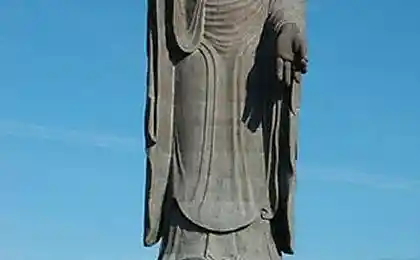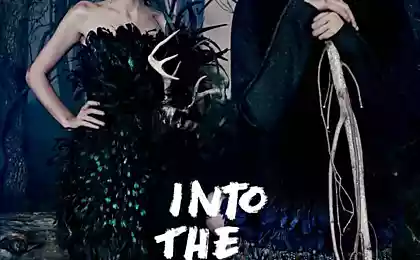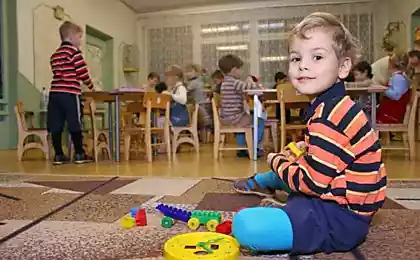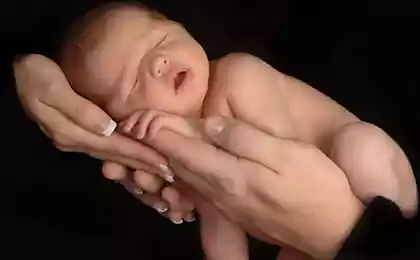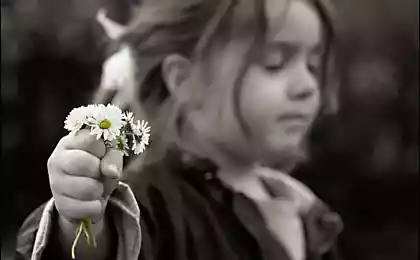724
Japanese education or the teacher in Japanese
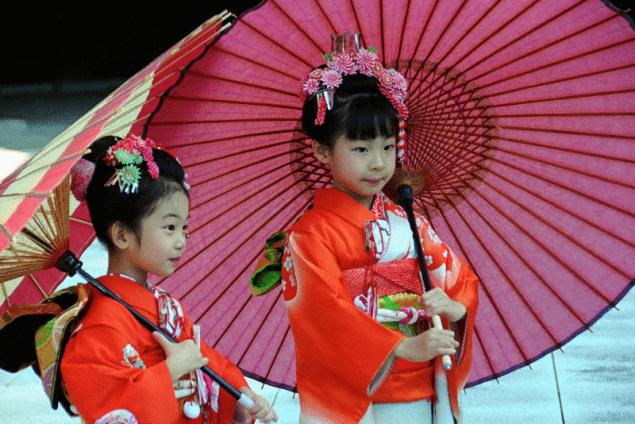
The Japanese believe that the firmament flows around the Great River. (We call it the Milky way.) On different sides of this river are the loving man and woman. They are committed to each other wholeheartedly. But only once a year, on 7 July, when the Great River is shallower, they can cross the Ford and meet. This day, the Japanese revere as a great celebration of the feast of the Stars. More Precisely, Stars Weavers. The woman is a Weaver (weaving in Japan — traditionally female craft).
On this day, children write on small pieces of paper wishes and tied to the branches of a tree. A kindergarten teacher tells them legends about the stars and legends of the ancient traditions of Japan.
Tradition is the key word for understanding the culture of this country, which the Japanese themselves call the Country of the rising sun. Tradition permeated the whole of Japanese life, including the education system, including preschool.
According to the tradition of Japanese education is a male fiefdom. Among the teachers of universities are women — a rarity. And school them a bit. Among the Directors of the preschool institutions women almost never occur. And the last time the men began to push women in the profession of educators.
In Japan, kindergarten is not compulsory education stage. Children come here at the request of the parents — usually the age of four. Sometimes, as an exception, during a strong occupation of the parents of the child can take into the garden with three years. There is in Japan, and a nursery for the kids, which is still only a year old. But to give the children from the family so early is not recommended. To put the child to such a school, parents must write a statement to justify the inability to educate your kid at home for up to three years of very good reasons.
Almost all kindergartens in Japan are private. Among them special place is occupied by the so-called elite gardens, under the tutelage of prestigious universities. If the child enters a kindergarten, the future can be considered secured: upon reaching the appropriate age, he goes to the campus school, and from there without any exams to enter University. In Japan there is quite an intense competition in the field of education: University degree is a guarantee of getting prestigious, well-paid work in the Ministry or some well-known firm. And this, in turn, career progression and financial well-being. So to get to kindergarten at a prestigious University is very difficult. Parents pay for the baby's arrival a lot of money, and the kid, to be accepted, must pass a rather difficult test.
In the winter of 1999, Japan was shaken by the news of the terrible criminal offense: one woman killed a young child who became a rival of her own children on exam for admission to kindergarten. Of course, such a case is a phenomenon out of the ordinary. But anyway, the relationship between parents of pupils of kindergartens of the elite (most of whom belong to a successful, prosperous corporations) is quite intense and jealous. However, these kindergartens are not many. As not a lot of kindergartens and so-called Pro-Western directions dominated by the principles of free education and it isn't that hard and quite heavy for small children the system of classes, which is typical of the "elite" gardens.
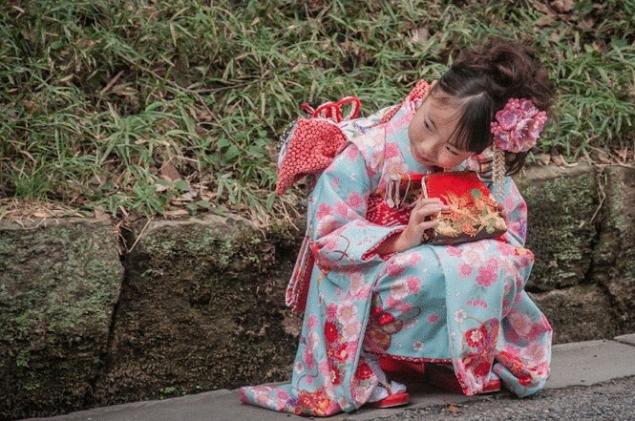
In most kindergartens the main task of educators is to teach children to be obedient. Home education the Japanese have extremely soft, children rarely something forbidden. But to strangers on the street, in public places —a Japanese tradition strictly require the expression of ultimate respect, including from the young children. Therefore a lot of time in kindergarten is given to the education of manners and familiarity with the ritual side of life. Children have to learn many polite verbal formulas (of the Japanese language is saturated like a wet sponge) and know where and when they should be applied.
The essential element of Japanese etiquette is the bow. The Japanese escorted the bow to every "thank you", bowing at the meeting, bowing to the food — thank the higher powers and hosts for the forthcoming meal, bow after a meal, even in Parliament — and that bow. Once a week the Director of every Japanese schools made a speech before the students lined up in columns in the schoolyard. With the end of the speech students should bow. And then to bow again, upon removal of the national flag. The requirement to bow in response to the words of the Director are not written in any law. This requires the tradition that the youngest must obey their elders and to Express their reverence. Begin to learn already in kindergarten.
Until recently, Japan was an agricultural country. And for the peasants spring — time to start planting. Although the Japanese New year is now celebrated according to the Western Gregorian calendar, April is traditionally the starting point in the business life of the Japanese. From this point on come into force contracts, begin the work of newly hired employees, started new projects.
Academic year in Japan also begins April 1. On this day in all educational institutions — from kindergarten to University — conducted the opening ceremony. And the Director of the kindergarten welcomes its young pupils with the exact same seriousness as the rector of the University — its students.
All educational institutions of the country engaged on the same timeline: academic year divided into three semesters. Between semesters vacation for students, and for students, and for pupils of kindergartens. During the holidays, young children can come to kindergarten for a swim in the pool (pools are practically in every kindergarten) and a little chat with the teacher about life. But classes at this time are not possible.
A huge role in the preservation of the traditions of playing the holidays
Public holidays in Japan are: 15 August — the day of the end of world war II, October 9 — physical culture Day November 23 — labor thanksgiving Day December 24 — Christian Christmas.
Physical culture day — the biggest holiday in Japanese kindergarten. It is celebrated on sports, physical parades, gymnastic performances.
In the labor thanksgiving Day, children usually go on a tour: police station, fire Department, station — i.e. where people work serving the state. This kindergarten tour easy to learn, because the children are in a special form. An essential element of this form beanie: boys — white, girls — red.
White and red — the colors of the national flag of Japan. White is considered the color of purity and red is the color of the sun. Red is a female color — maybe because it reminds of the blood.
The New year the Japanese eat rice cakes. Rice cakes they have considered the traditional national dish, like the Russian — loaf. But the modern urban Japanese, of course, do not have conditions to bake cakes themselves, and treat the purchase. In kindergartens, however, there is a small mortar in which children themselves pounded rice. Then this softened rice adult Sadouskaya in the kitchen bake these cakes, which all eat.
Say rice cakes do not only people, but also moon rabbits. With the beginning of September, the teacher gives the children homework: to observe the Moon and promises them that the most attentive will see the rabbit in the moon bake the moon cakes.
A favorite amusement of Japanese children at New year — launch a kite. This tradition, which the Japanese Christians had retained from ancient times.
In addition to the state, Japanese people celebrate many traditional holidays.
Girls ' day (March 3) and boys Day (may 5) associated with the rites of the samurai.
On the day of the girls home and kindergarten, arrange puppet hill, which symbolizes the hierarchical ladder of the samurai, and eat colored rice cakes, reminiscent of the decorated cakes. At the top of the cake, the figures of the Emperor and Empress, removed here with puppet slides.
Day boys was originally the day of their ordination in the samurai. In this day in Japanese kindergartens make paper carp. The owner of the carp will be courageous and strong.
There are the Japanese and the Day mom, something resembling a familiar March 8. But the Japanese unlike the Russians don't sing the beauty of women and not their talents, to awaken in men the beast, and the ability to give birth and raise a child. On this day, moms come to the kindergarten, the children greet them and give them carnations. Cloves in this day give mothers across the country.
In addition, the Japanese there is also a Day dad. Dad in kindergarten celebrate the same scenario, and mothers (apart from handing carnations). Thus observed some parental equality, and most importantly — the role of the father in the upbringing of the child.
Fun holidays, like our carnival, is celebrated in Japan, February 4 — on the eve of spring. Children with teachers doing the masks of monsters and hang them on the wall. These monsters are the incarnation of evil must be expelled. At the crucial moment of the holiday is "real" animated monster — educators in suits. Children throw beans at them and shout, "Monster, go away! Let happiness comes from!" Scatter the beans around the kindergarten: they have magical properties to ward off evil power.
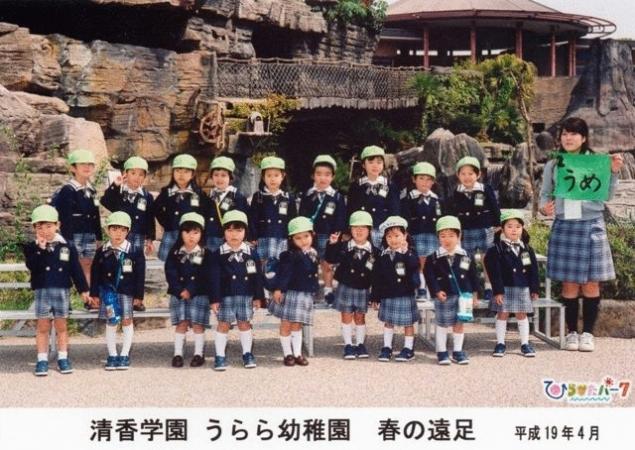
Despite the commitment of the Japanese traditions, they have no concept of a group of children in our understanding.
The composition of the groups in the kindergarten is not constant. Each year, groups are formed again. The same situation in primary school: here the composition of the classes shuffled every two years, and the teacher changes every year.
The constant change of the children's part to do with trying to give kids more opportunities for socialization. If the child does not have a relationship in this particular group, there is a possibility that he has friends among the other children.
Educators change in order that children are not used to them too much. Strong attachment, according to the Japanese (after the Americans), give rise to a too strong dependency of children from their mentors, and the latest burden too heavy responsibility for the fate of the children. If the teacher for some reason took a dislike to the child, this situation too will not be very heavy. Perhaps with another caregiver, the child will develop friendships and he will not think that all adults don't like it.
To become a kindergarten teacher in Japan, you have to study for two years at the Institute or University. It's not something that, say, a temporary job as a nanny in Chelyabinsk or the position of teacher in private, for example, the American school. Here the approach is somewhat different and, like everything in Japan, extraordinary. The qualification is given on the results of written testing. Using tests validated awareness and memory. But the attitude to children and the ability to work with them in this way could not be verified. Therefore, in Japanese kindergartens employs a lot of people who don't like children. However, we cannot say that this is a purely Japanese problem. Is there with us. And everywhere.
© Marina Aromshtam according to Japanese journalist, Fuse of Juregui
source: miuki.info
Source: /users/1077



